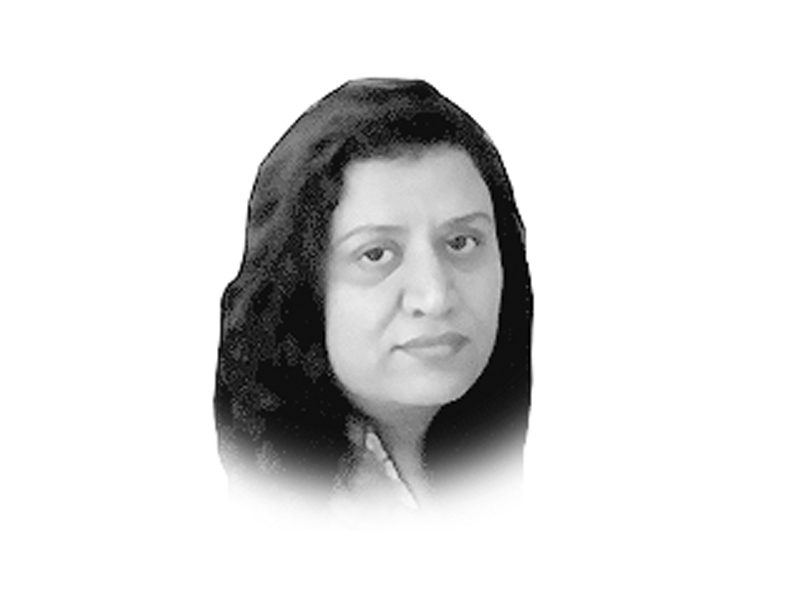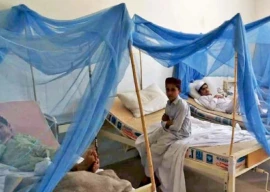
The subject of economic inequality has long caught the attention of development economists and practitioners. One question surrounding this debate is whether inequality is really bad. To be sure, inequality in a society has several dimensions and social scientists consider some types of inequalities less tolerable than others. For instance, on the basis of social justice and fairness, inequality in opportunities is considered more unjust than income inequality per se. This is because income inequality, to a certain extent, reflects differences in natural abilities, acquired skills and personal efforts. Inequality in opportunities, on the other hand, is much less tolerable simply because it denies people a level playing field to exercise their potential.
An important factor inhibiting people from exercising their full potential is poor health. Children who suffer from malnutrition or are stunted, for instance, have smaller brains and perform poorly in education. Likewise, adults who are sick or malnourished can hardly exercise their full potential in the labour market. Health inequality, undoubtedly, reflects inequality in opportunities and it is perhaps due to this reason that WHO now considers health inequality — in addition to the average status of health — as a distinct dimension of the performance of health systems. Pakistan stands out at the international level not only in terms of its poor average status of health but also in terms of its extremely high levels of health inequalities. The analysis of national household level surveys reveals large-scale spatial and socio-economic disparities in crucial health indicators.
Health inequalities, in general, arise from disparities in all those factors that determine good health. Foremost among these are socio-economic status, education and access to healthcare facilities. From a policy perspective, public spending on health that increases the availability of and access to public healthcare services may serve as a potentially important instrument to reduce disparities in health outcomes. Quite the contrary, public spending on health, if spent in an ineffective and inequitable manner, may exacerbate health inequalities.
In the case of Pakistan, public spending on health is not only too low, but is ineffective and often allocated and spent in a manner that benefits the rich more than the poor. An intra-sectoral allocation of the public health sector budget in Pakistan shows that the chunk of the budget is spent on interventions that benefit the relatively well-off income groups more than the poor. The official data on the allocation of the health sector budget, for instance, reveals that more than 70 per cent of the health sector budget in Pakistan goes towards ‘hospital care’ whereas less than 20 per cent is allocated for ‘preventive facilities and measures’, a category that includes primary healthcare facilities such as rural health centres, basic health units, dispensaries, first aid posts, mother and child health centres, programmes such as the Lady Health Worker Programme; Malaria Control Programme; Tuberculosis and HIV/AIDS Control Programme; National Maternal and Child Health Programme; the Expanded Programme on Immunisation; and Food and Nutrition Programme. Merely 0.2 per cent goes towards mother and child health.
What are the consequences of this pattern of allocation on health equity? Well, cross-country research across the developing world shows that, on average, hospital care tends to benefit the relatively richer income groups more than the poor whereas basic healthcare services and facilities tend to benefit the poor more than the rich. My own empirical research in the context of mother and newborn child health services utilisation patterns in Pakistan validates this finding.
The primary causes of mortality, especially among children under five years of age, in Pakistan continue to be infectious diseases such as diarrhoea, pneumonia and ARI, etc. in addition to maternal and child malnutrition. These diseases can be prevented effectively through basic public health measures aimed at improving nutrition; creating awareness on hygiene and other public health matters; immunisation programmes; and improving sanitary conditions, etc. Increasing the budgetary allocations on basic health facilities and preventive measures is, therefore, likely to promote not only equity in health outcomes but also deal with critical health issues that continue to characterise the country, such as the failure to achieve polio eradication to date and the worsening of malnutrition trends over time. This is not to undermine the significance of hospital care in any way, as hospitals and general clinics are essential for the treatment of diseases. However, given the current resource constraints in Pakistan and equity considerations, perhaps it is wise to encourage the private sector to invest in hospital care with some strategy on the part of the government to provide vouchers or subsidies to the poor in order to help them access hospital care when they need to do so.
Summing up, the improvement in average health indicators and achieving equity in health outcomes are regarded as equally important health goals in civilised countries that uphold the principle of social justice while formulating policies. The starting point for policymakers concerned in their effort towards the achievement of these goals in Pakistan is not only enhancing their health sector budget and spending it transparently and efficiently, but also revisiting their budgetary priorities so as to make them more equitable. Unfortunately, many politicians in Pakistan are oblivious of the equity concerns and often boast of having established state-of-the-art hospitals while highlighting their performance in the health sector. In a country where a crippling yet easily preventable disease such as polio have not been eliminated yet, where malnutrition among children and adults seem to be perennial problems, and where infectious diseases and perinatal conditions continue to dominate the major causes of mortality among children, it is not hard to decipher how public priorities ought to be ranked.
Published in The Express Tribune, January 31st, 2014.
Like Opinion & Editorial on Facebook, follow @ETOpEd on Twitter to receive all updates on all our daily pieces.
COMMENTS (3)
Comments are moderated and generally will be posted if they are on-topic and not abusive.
For more information, please see our Comments FAQ





















































Plus medical curriculum is geared as doctors have to practice in north America. Hardly there is teaching in training how to work effectively with scarcity of resources and practice preventive strategies. Many practitioner do unethical practices. How one can stop that when state cannot controll quacks .... Whole system is upside down.
An excellent writeup! This should become a policy guideline document for the government of Pakistan - a country lagging behind in Health Sector as compared to other developing countries of same size. Policymakers should read, understand and develop an action plan based on this article. Well done Dr. Sadia Malik.